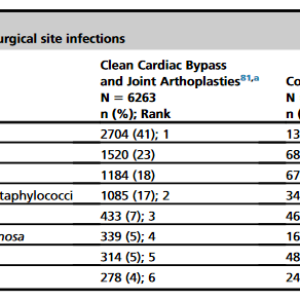Surgical Site Infection Prevention: A Review
Surgical site infections affect approximately 0.5% to 3% of patients undergoing surgery and are associated with longer hospital stays than patients with no surgical site infections.
Comparison of metrics used to track central-line-associated bloodstream infections (CLABSIs) and catheter-associated urinary tract infections (CAUTIs) across a regional network
The paradoxical relationship between standardized infection ratio and standardized utilization ratio for catheter-associated urinary tract infections (CAUTIs) in contrast to central-line-associated
Colon surgical-site infections and the impact of "present at the time of surgery (PATOS)" in a large network of community hospitals
Surgical site infections (SSIs) are the most common healthcare-associated infection (HAI) in the United States and account for almost a quarter of all HAIs
Surgical site infection trends in community hospitals from 2013 to 2018
Sparse recent data are available on the epidemiology of surgical site infections (SSIs) in community hospitals.
The Impact of Infection Versus Colonization on Clostridioides difficile Environmental Contamination in Hospitalized Patients With Diarrhea
Lab Director Bobby Warren and his team take us through their work studying environmental contamination from patients with CDI.
Severe acute respiratory syndrome coronavirus 2 environmental contamination in hospital rooms is uncommon using viral culture techniques
DiRTE Lab team assessed environmental contamination of inpatient rooms housing coronavirus disease 2019 (COVID-19) patients in a dedicated COVID-19 unit.
Surgical Site Infections: An Update
DICON faculty and SSI expert Dr. Jessie Seidelman and DICON Medical Director D. Dev Anderson provided an update on SSIs to the journal Infection Disease Clinics of North America.

